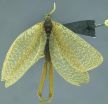(Press-News.org) LA JOLLA, CA – February 15, 2013 – Doctors currently struggle to determine whether a breast tumor is likely to shift into an aggressive, life-threatening mode—an issue with profound implications for treatment. Now a group from The Scripps Research Institute (TSRI) has identified a mechanism through which mitochondria, the powerhouses of a cell, control tumor aggressiveness. Based on their findings, the team developed a simple treatment that inhibits cancer progression and prolongs life when tested in mice.
The research team, which describes its results February 15, 2013, in an article published online ahead of print by The Journal of Clinical Investigation, hopes to proceed quickly to human clinical trials to test this new approach using drugs already in use for other conditions.
Looking at Clues
The TSRI laboratory of Associate Professor Brunhilde H. Felding studies cancer, especially the mechanisms that control metastasis, the spread of cancer from its primary site to distant organs in the body.
Past research suggested that mutations affecting mitochondria, which are key to energy production in cells, strongly influence whether a tumor becomes aggressive. But the mechanism was not clear.
"We decided to investigate a specific protein complex, called mitochondrial complex I, that critically determines the energy output of cellular respiration," said the study's first author, Antonio F. Santidrian, a research associate in Felding's laboratory. To do this, the group teamed up with Akemi and Takao Yagi at TSRI, who are leading experts in complex I research. Using unique reagents from the Yagi group, the Felding team discovered that the balance of key metabolic cofactors processed by complex I—specifically, nicotinamide adenine dinucleotide (NAD+) and NADH, the form it takes after accepting a key electron in the energy production cycle—was disturbed in aggressive breast cancer cells.
Exciting Results
To find out if the balance of NAD+ and NADH was critical for tumor cell behavior, the team proceeded to insert a yeast gene into cancer cells that caused a shift toward more NAD+. To the scientists' amazement, this shift caused the tumor cells to become less aggressive.
"It was a really happy moment for me," said Santidrian. But the more exciting moments, he said, were yet to come.
To confirm and extend the initial findings, the team altered genes tied to NAD+ production. The resulting shift again showed that higher NADH levels meant more aggressive tumors, while increased NAD+ had the opposite effect.
The next logical step was to find a simple way to enhance the critical NAD+ level therapeutically. So the team explored what would happen if mice with breast cancer were fed water spiked with nicotinamide, a precursor for NAD+ production. The scientists found cancer development was dramatically slowed down, and the mice lived longer
"In animal models at various stages, we see that we can actually prevent progression of the disease," said Felding.
Next Steps
Now the group is working toward human trials to learn whether nicotinamide or other NAD+ precursors will have similarly impressive results in humans. Since NAD+ precursors are already used for other purposes, such as controlling cholesterol levels, achieving approval for human clinical trials should be simpler than is normally the case.
"It is not a totally new treatment that would need to be tested for toxicity and side effects like a new drug," said Felding. "And we already know the precursors can be easily ingested."
If manipulating the NAD+/NADH ratio in humans has the same effect as in mice, the results could be profound. Such treatment could benefit people at risk of developing aggressive breast cancer, offer complimentary treatment to chemo and radiation therapy to avoid disease recurrence, and maybe even provide a preventive treatment for women with a family history of breast cancer.
INFORMATION:
This research was funded by grants from the National Institutes of Health (R01CA112287, R01CA170737, R01CA170140, UL1RR025774 and R01DK053244), the US Department of Defense (W81XWH-08-0468), the California Breast Cancer Research Program (17NB-0058, 16IB-0052, 12NB-0176 and 13NB-0180), and the Susan G. Komen Foundation, as well as a donation from Las Patronas.
In addition to Santidrian and Felding, authors of the paper, titled, "Mitochondrial Complex I activity and NAD+/NADH balance regulate breast cancer progression," were Akemi Matsuno-Yagi, Melissa Ritland, Byoung B. Seo, Sarah E. LeBoeuf, Laurie Gay, and Takao Yagi, all from TSRI.
Scientists find promising new approach to preventing progression of breast cancer
2013-02-15
ELSE PRESS RELEASES FROM THIS DATE:
Study finds that 'Big Pharma' fails at self-policing ED drug advertising
2013-02-15
CHARLOTTE, N.C. –Feb. 14, 2013– The pharmaceutical industry's efforts to self-regulate its direct-to-consumer (DTC) advertising are "an industry-sponsored ruse," intended to deflect criticism and collectively block new Federal regulation, a study released today in the Journal of Health Politics, Policy and Law found.
The paper, "The Politics and Strategy of Industry Self-Regulation: The Pharmaceutical Industry's Principles for Ethical Direct-to-Consumer Advertising as a Deceptive Blocking Strategy," was written by Denis Arnold, Associate Professor of Management and Surtman ...
Avoiding virus dangers in 'domesticating' wild plants for biofuel use
2013-02-15
In our ongoing quest for alternative energy sources, researchers are looking more to plants that grow in the wild for use in biofuels, plants such as switchgrass.
However, attempts to "domesticate" wild-growing plants have a downside, as it could make the plants more susceptible to any number of plant viruses.
In a presentation at this year's meeting of the American Association for the Advancement of Science, Michigan State University plant biologist Carolyn Malmstrom said that when we start combining the qualities of different types of plants into one, there can be ...
Breast cancer risk prediction model for African American women underestimates risk
2013-02-15
(Boston) – A breast cancer risk prediction model developed for African Americans tends to underestimate risk in certain subgroups, according to a new study from the Slone Epidemiology Center (SEC) at Boston University. The model predicted estrogen receptor (ER)-negative breast cancer, which is a more aggressive form of breast cancer that disproportionately affects African American women, more poorly than ER-positive breast cancer.
The study, published online today in the Journal of the National Cancer Institute, was led by Deborah Boggs, ScD, postdoctoral associate at ...
Neuronal activity induces tau release from healthy neurons
2013-02-15
HEIDELBERG, 15 February 2013 – Researchers from King's College London have discovered that neuronal activity can stimulate tau release from healthy neurons in the absence of cell death. The results published by Diane Hanger and her colleagues in EMBO reports show that treatment of neurons with known biological signaling molecules increases the release of tau into the culture medi-um. The release of tau from cortical neurons is therefore a physiological process that can be regulated by neuronal activity.
Tau proteins stabilize microtubules, the long threads of polymers ...
University of Waterloo researchers propose breakthrough architecture for quantum computers
2013-02-15
WATERLOO, Ont. (Thursday, Feb. 14, 2013) A team of researchers at the University of Waterloo's Institute for Quantum Computing has proposed a new computational model that may become the architecture for a scalable quantum computer.
In a paper to be published in the journal Science this week, the research team of IQC Associate Professor Andrew Childs, post-doctoral fellow David Gosset and PhD student Zak Webb proposes using multi-particle quantum walks for universal computation. In a multi-particle quantum walk, particles live on the vertices of a graph and can move between ...
UTSW researchers identify new enzyme that acts as innate immunity sensor
2013-02-15
DALLAS – Feb. 15, 2013 – Two studies by researchers at UT Southwestern Medical Center could lead to new treatments for lupus and other autoimmune diseases and strengthen current therapies for viral, bacterial, and parasitic infections.
The studies identify a new enzyme that acts as a sensor of innate immunity – the body's first line of defense against invaders – and describe a novel cell signaling pathway. This pathway detects foreign DNA or even host DNA when it appears in a part of the cell where DNA should not be. In addition, the investigations show that the process ...
Researchers uncover new findings on genetic risks of Behçet's disease
2013-02-15
ANN ARBOR, Mich. — Researchers don't know the exact cause of Behçet's disease, a chronic condition that leads to oral and genital sores and serious complications such as blindness, but new research brings better understanding to what makes some people more susceptible to being affected.
In one of the most extensive genetic analyses of Behçet's disease, a University of Michigan-led, international team of researchers has identified novel gene variants in the inflammatory disorder and uncovered data that could apply to studies of other diseases. The results appear in the ...
Spectacular forcepfly species discovered for the first time in South America
2013-02-15
Forcepflies are usually known as earwigflies, because the males have a large genital forceps that resembles the cerci of earwigs. A new species of forcepfly Meropeidae (Mecoptera) from Brazil was described, representing only the 3rd extant species described in this family and the 1st record of the family from the Neotropical region. The distribution and biogeography of the family are discussed and it is even proposed that Meropeidae originated before continental drift and then divided into two branches, northern and southern, with the breakup of the old supercontinent Pangea. ...
This is why it takes so long to get over tendon injuries
2013-02-15
The Achilles heel of the body – getting over damage to tendons can be a long and painful process. By combining the nuclear tests of the 1950s with tissue samples and modern technology, a research collaboration between the Aarhus University and University of Copenhagen now reveals why the healing process is so slow.
Many people are affected by injuries caused by straining the Achilles tendon and other tendons in the body. Danish athletes alone account for up to 200,000 injuries per year. This often leads to frustration over the poor treatment options available, and it can ...
Research uncovers a potential link between Parkinson's and visual problems
2013-02-15
The most common genetic cause of Parkinson's is not only responsible for the condition's distinctive movement problems but may also affect vision, according to new research by scientists at the University of York.
Parkinson's, the second most common form of neurodegenerative disease, principally affects people aged over 60. Its most common symptom is tremor and slowness of movement (bradykinesia) but some people with Parkinson's also experience changes in vision.
Now for the first time, researchers in the University's Department of Biology have established a link between ...




